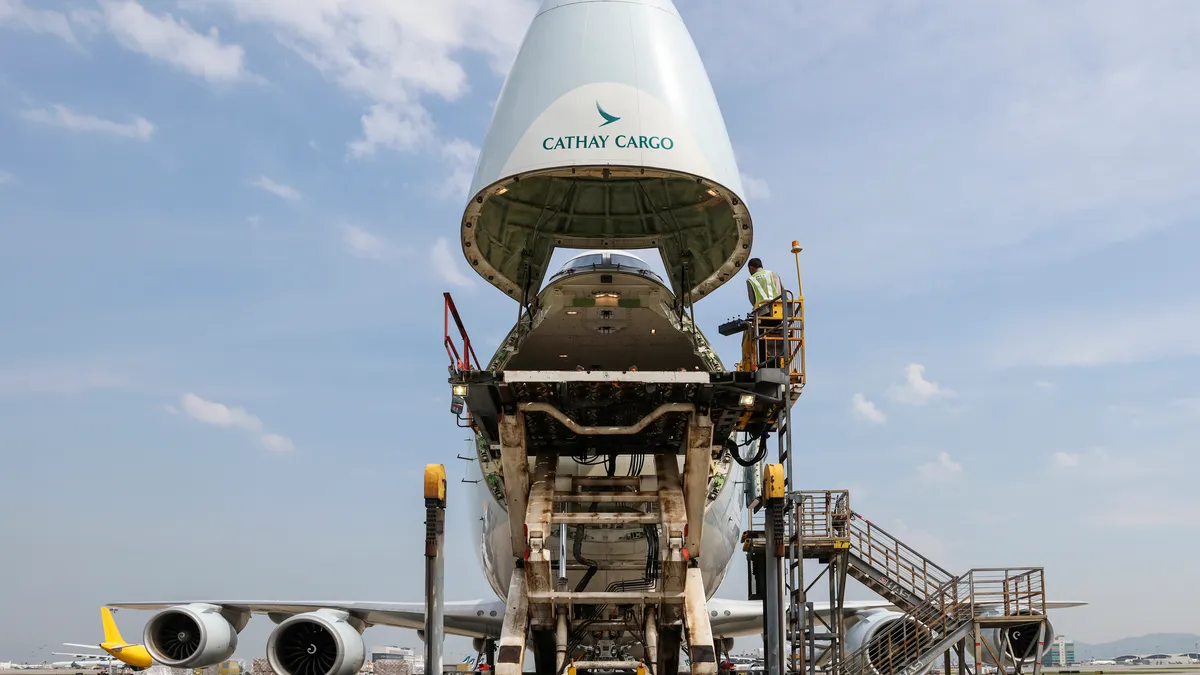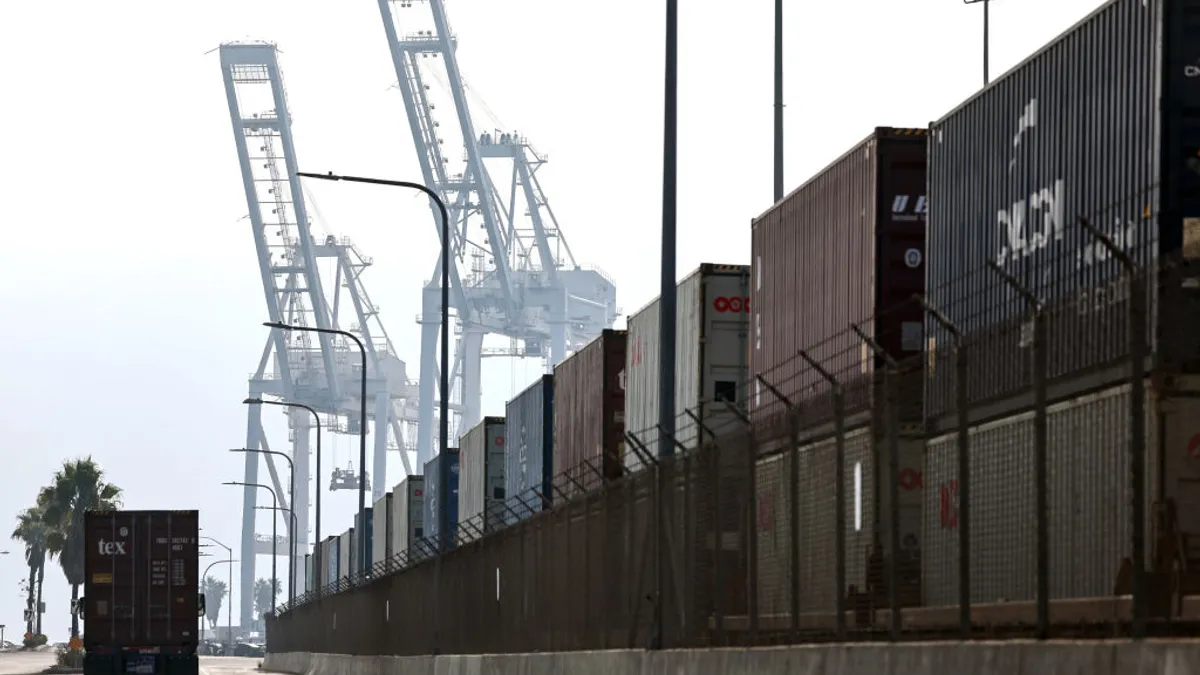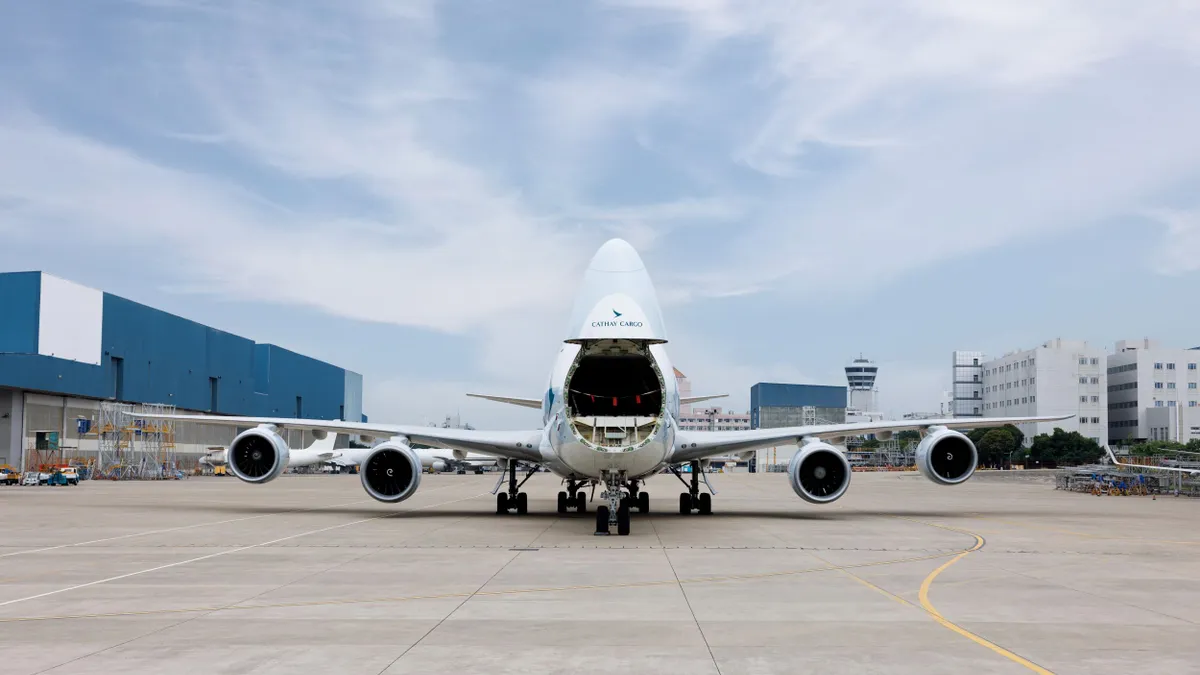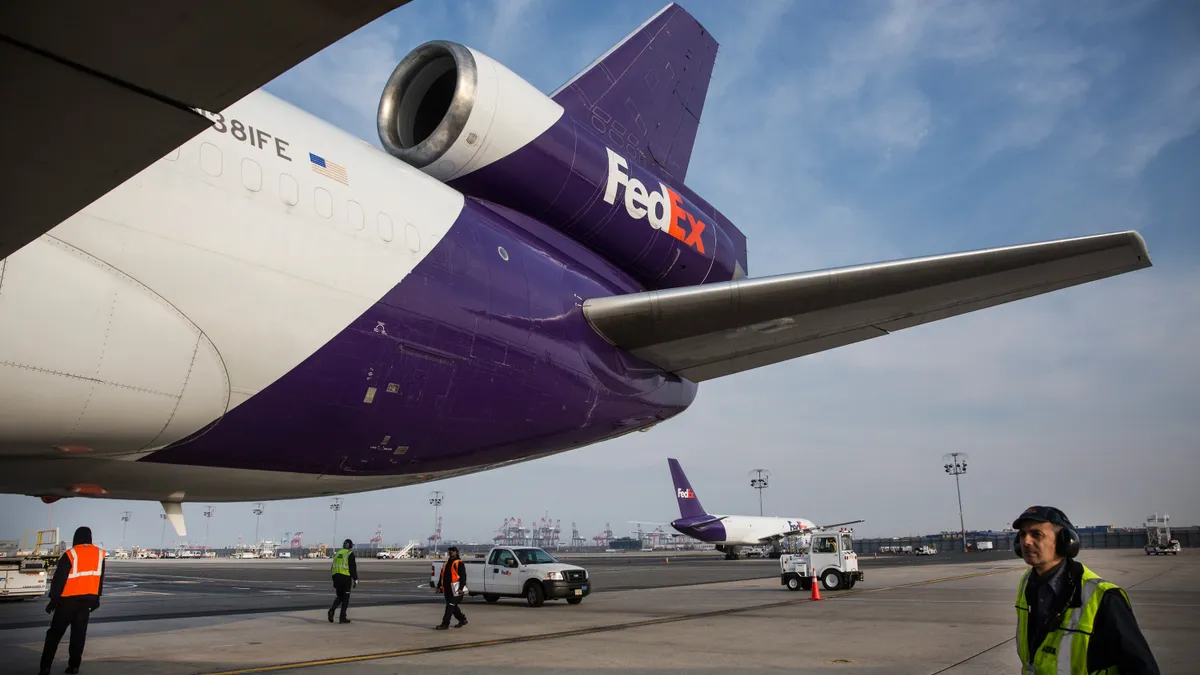Editor’s note: This story is part of a series on the de minimis rule's supply chain impact and its uncertain future. Read the previous story here.
Surging volumes from ultra-fast fashion companies like Shein and Temu are exacerbating e-commerce growth, which has quickly become a major driver for air cargo — and it’s not slowing down.
By 2027, e-commerce is expected to represent up to 30% of global air cargo volumes, compared to 20% in 2022, Alexis Boutet, VP and global head of airfreight at Flexport, told Supply Chain Dive in an email.
With U.S. lawmakers more intensely scrutinizing e-commerce goods from Asia in recent years, there’s a chance that the air cargo industry's windfall may disappear, as a lowering of the de minimis exemption threshold — which enables companies to avoid tariffs for shipments below $800 into the U.S. — may be on the horizon.
However, new regulations will have a tough time changing entrenched consumer habits that rely on the speed of air transportation.
“The genie is out of the bottle regarding e-commerce,” Xeneta Chief Airfreight Officer Niall van de Wouw told Supply Chain Dive in an email. “Governments in the West may bring in tighter regulations - and e-commerce businesses will need to adapt - but this type of consumer offering is here to stay.”
The air cargo impact of a lower threshold
Companies all around the world can gain from the current de minimis threshold, Brian Bourke, global chief commercial officer at Seko Logistics, told Supply Chain Dive in an interview. The amendment isn’t just about low-value items — it’s also about speed and SKU variety. For instance, a $400 shirt that is considered a luxury item can still benefit from de minimis, according to Bourke.
As air cargo demand continues to be heavily influenced by e-commerce trends, how will lowering the threshold affect market dynamics? Van de Wouw said the answer depends on where goods are bought.
“If goods are bought on the high street then it is likely they will be shipped via ocean because businesses can build up stock inventories,” van de Wouw said. “If they are bought online — in particular fast-fashion items — then the only way to get them to consumers in the West within the required timeframe is by air freight."
Air cargo dominates low-cost, cross-border shipping
Changes to the threshold are not expected to have a dramatic impact on the air cargo market, van de Wouw added. In fact, the de minimis threshold is much lower in the European Union compared to the U.S., but large e-commerce volumes are still being transported into both regions, he said. Even if the U.S. lowered the threshold in line with the EU — at 150 Euros, for now — “these items are so cheap that most would still be exempt.”
“The primary aim of an e-commerce business model is not avoidance of import duties - it is to directly connect consumers in the West with cheap manufacturing in the [Asia-Pacific region],” said van de Wouw. “Therefore, in the short to medium term, little is likely to change.”
There is still a general consensus that regulatory changes are bound to happen, Bourke said. And while the lowering of the de minimis threshold may spark some market shifts, air cargo will continue to be a requirement for transport needs. But parcel demand was strong before the de minimis threshold was raised in the U.S. and will continue that way despite any regulatory changes, Bourke added.
Instead, lowering the threshold may prompt companies to question overall profitability, said van de Wouw.
“There may be lots of money to be made flying e-commerce goods out of China to Europe and the U.S. But if you then have to fly the plane back empty, it makes the overall e-commerce revenue stream less profitable,” he explained. “We see this in the fact it has never been cheaper to fly goods into China from the West.”
What supply chain managers can do to prepare
With Congress looking to advance legislation that impacts the de minimis exemption in the fall, near-term contract negotiations and peak planning are critical for preparation.
Air cargo can be a challenging market to navigate, especially under the shadow of regulatory changes, and shippers should keep a constant eye on rate levels, Bourke said.
He added that air freight platforms like Freightos or Xeneta can give access to what spot rates may look like throughout the year. Shippers should also be asking their freight forwarders for market updates regularly to help them lock in rates without going over an annual transportation budget.
Indices won’t reveal the future, “but they’ll tell you the present and the past, which can be important to determine trends into the future,” Bourke explained. “But then, you know, freight forwarders can ultimately provide more context and more forward looking thoughts and where rates may go.”
Meanwhile, as shippers navigate changing rates, supply chain managers will compete to secure air freight capacity. According to freight forwarder Dimerco, up to 40% of carrier capacity is pre-allocated under forwarder contracts, but that percentage is much higher this year, as many e-commerce companies are requesting at least one block service agreement with airlines. This means that small- and medium-sized forwarders have, at minimum, volume contracts of up to 50 tons per month with carriers. This leaves very little capacity available for the open market.
"If e-commerce is part of their supply chain, it’s important to think end to end and work with partners that can help make swift adjustments based on potential new e-commerce regulations."

Alexis Boutet
VP and global head of airfreight at Flexport
In a July 5 report from Xeneta, van de Wouw prompted shippers to start peak season planning early, especially as the e-commerce boom cuts into available capacity, rates rise and companies like DHL Express launch seasonal surcharges ahead of the holidays.
Air freight procurement teams can also mitigate risks and seize opportunities by looking at where e-commerce volumes are originating from, said van de Wouw.
“For example, they could avoid moving goods via e-commerce hot spots such as Hong Kong and Shenzhen and use Xeneta data to understand the cost and viability of alternative trade corridors,” he said. “They should also consider whether they can benefit from lower rates on backhauls.”
Regardless of any regulatory changes to the de minimis exemption, e-commerce demand is expected to remain strong into 2025, and supply chain managers should look to secure space and start negotiations now to avoid spiking spot rates, Boutet said.
“If e-commerce is part of their supply chain, it’s important to think end to end and work with partners that can help make swift adjustments based on potential new e-commerce regulations, such as moving from air freight to ocean shipping or switching from Asia-based fulfillment to US/EU-based fulfillment networks,” he added.






















